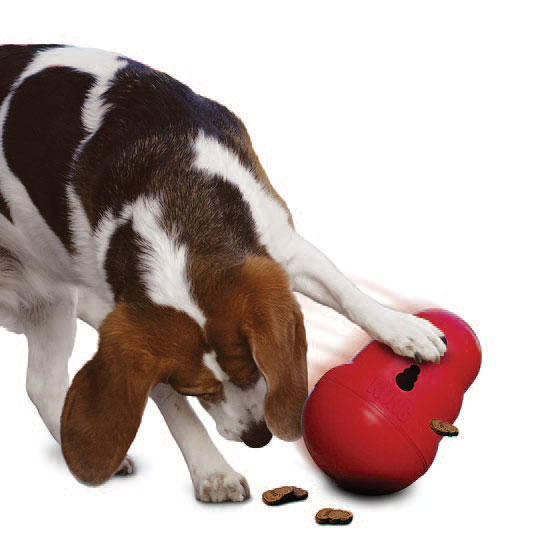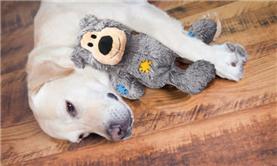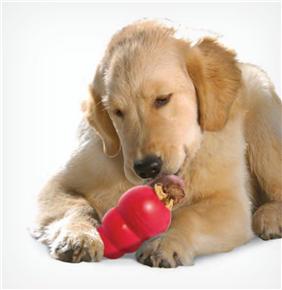
The chill of winter is in the air, so for many this means our dogs will be spending more time inside. The shorter daylight hours, coupled with the cold and wet often creates reluctance (from dog owners) to venture outdoors for walks. Dogs need exercise and stimulation regardless of the weather and just as we might go stir crazy when cooped up for extended periods, our furry friends too can become restless and may end up driving us nuts!
Dogs don’t utilise human reasoning to not act on their restlessness, many will pace agitatedly, chew, destroy, and even vocalise in an attempt to expend pent up energy. This is not a ‘bad’ dog, rather a bored dog.
On days when the weather is at its harshest it helps to have some ideas on hand to provide boredom relief from the comfort of your own home. There are many fun indoor activities you and your dog can enjoy, from games of fetch, trick training and treat (treasure) hunts, to building obstacle courses in the living room. So don’t let Mother Nature stop you and your dog from having a good time, you are only limited by your imagination.
Consider this: if every dog owner could honestly say that they walked their dog for 1 hour a day, every day (this is a generous
assumption) then likewise consider what allowances have been made for
the other 23 hours of their dog’s day. Granted, most pooches may sleep a
large portion of the day, but is it really any wonder why they are so
overly excited when their owners arrive home from work?
Selecting Toys for Enrichment
Toys are a great way for dogs to interact and also a way to stimulate their minds, when selecting toys for a dog there are several factors to take into consideration, for example: what is the toy’s intended purpose? Is it for chewing, or a game of tug, is it a throw toy for games of retrieve, or is it a treat dispensing puzzle? Is it the right size for my pet? Does it suit my pet’s play needs and chewing temperament? Is it safe?
For years I have observed how dogs vary significantly in how they play and interact with different types of toys. Some dogs regardless of breed and size can be very gentle on their toys, which may last for years. Other dogs may be tough on toys and are able to destroy them with ease over a short period. I have observed dogs who simply enjoy carrying their toy around, some enjoy the comfort of sleeping with them and some even suckle on the material toys, while others may derive great enjoyment from the act of pulling at or tearing them apart, even grinding them into little pieces and ripping out all the stuffing.
This is simply the nature of the individual dog which evolves as they mature. There are a number of dog toys on the market to cater to a range of play and interactive needs, not all toys are created equal and not all types of toys will be suited to all dogs as dogs do vary greatly on how tough they are on their toys.
As puppies grow they give you an indication of their developing chewing temperament, this can be gauged by observing the level of destruction and longevity of their toys. Factoring in that every individual dog has its own unique chewing temperament, its physical size alone cannot be used to determine the toy size and strength required by the individual to meet their chewing needs.
What is a chewing temperament?
A dogs chewing temperament is a combination of the individual’s ability to apply heavy compression and the motivation to do so. Even the gentlest dog can apply heavy pressure when motivated to do so. Dogs, much like their ancestors the wolf, are social animals that use their jaws not only for hunting/eating, but for social interactions with their pack or family members. During play, puppies are learning to inhibit the force of their bite with other dogs or family members. They learn that play is more likely to continue if they aren’t too rough, therefore there is value in being gentle.
Toys don’t provide this same feedback, so a dog can be as gentle or as rough as they like to derive enjoyment from the game. Many toys even channel natural instincts to catch, chase, shake and crush prey, which would explain why some dogs become particularly excitable by squeaky toys.
Chewing styles
There are three basic chewing styles when it comes to dogs and their toys.
- Gentle Chewers – These dogs are easy on toys and prefer plush or fabric toys. They usually like to lick or suck on their toys, but rarely ever destroy them.
- Average Chewers – These dogs love to play with all kinds of toys and will often carry them around. They can be destructive with plush and fabric toys but rarely are destructive with rubber toys.
- Power Chewers – These dogs are usually strong, determined chewers who require more discretion when it comes to selecting toys. Choose durable, interactive play toys along with strong rubber toys. Sizing up is also helpful when picking toys for Power Chewers.
Please be mindful of safety warnings on product packaging. Many toys are designed to complement environmental enrichment by adding an interactive component to canine play. Not all toys are designed to be treated as chew toys which is why it is recommended to supervise play. This allows play to be monitored for the intensity with which a dog interacts with their toy. Toys made from fabric material are more likely to suffer destruction when treated like a chew toy.

The fact of the matter is that no safe dog toy is completely indestructible. Dogs’ teeth and jaws are designed for destruction, since cutlery is not an option. Product guidelines emphasise the importance of correctly sizing a toy to your pet’s age, weight, breed and how aggressive a chewer your pet may be. Again, proper supervision is very important especially when dogs demonstrate a preference for chewing on these toys.
It’s important to recognise the valuable role that treat and food dispensing toys play in any environmental enrichment plan. They not only stimulate the mind by adding a problem solving component to meals, but they also extend meal times and engage the dog for longer periods of time. These feeding puzzles can be used regularly and in place of a food bowl by simply measuring the dog’s meal ration and distributing it amongst the treat dispensers. This can be as simple as using dry food kibble and range to the more lavish use of treats, meats and veggies to pack and fill a chew toy.
Games for Enrichment

Find the biscuit, treasure hunt games
This game embraces the dog’s inner forager and encourages scenting for treats and food. Start off at beginner level and as the dog starts to understand the game increase the difficulty.
Consider crating the dog or putting him outside while you hide small piles of food in the house then release him to a biscuit hunt. Initially the piles of food should be very easy to find; as your dog gets better at this game the treats can be hidden in more difficult spots that the dog has to sniff out.
Recall games
Recall games can be lots of fun when turned into an entertaining game and have the side benefit of education for the dog. Recall games teach the dog to come when called, as well as building a better bond between dog and owner. This can be fun with 2 people or done with just 1.
In 2-person games, person 1 holds the dog by the collar, person 2 moves to another room and calls the dog. When the dog comes in, present a treat to the dog and hold the dog by the collar. Person 1 relocates to another room and calls the dog. The process can be repeated for several minutes and with the constant relocation. Not only is the dog expected to come when called, but also has the added challenge of having to locate the out of sight owner.
The 1-person game can be a bit more difficult. Start out by scattering a small amount of treats or kibble on the floor. While the dog scoops up the treats relocate to another room and call the dog. Repeat this for several relocations.
Teaching Tricks
Trick training can be loads of fun. It’s a great way to interact with your dog and it’s a useful means for keeping a dog’s mind active on wet weather days. Modern technology makes different ideas and techniques for teaching a variety of tricks readily available. There are numerous videos on You Tube that demonstrate various dog tricks and how to teach them. There are even dedicated dog trick apps for smart phone users. Remember as with any training exercise, keep sessions short, fun and rewarding.
Tug games
Tug games are another interactive indoor game that can be played with most dogs, provided everybody plays by the rules. Once the rules of the game have been established, tug games can be used as a legal outlet for a bit of roughhousing that helps stengthen bonds and builds healthy relationships.
Tug games can be useful distractions when redirecting inappropriate behaviours. Tug games can be utilised as reinforcement in behaviour modification and are also a useful way to redirect inappropriate use of teeth.
Indoor facilities and activities
Feel like getting out of the house with your pooch on wet weather days? Consider some indoor training facilities such as enrolling in a tricks class, which can be fun and challenging for dog and owner alike. Another great way to offer physical exercise for your dog is to attend an indoor canine swimming facility that allows dogs to swim laps in a heated pool.
Alternatively, a simple visit to a friends for a play date with another dog can really break up the boredom of the day for your dog.
By KONG Company - www.kongcompany.com
Contributor: Rachael James
Last updated on 18 May 2020